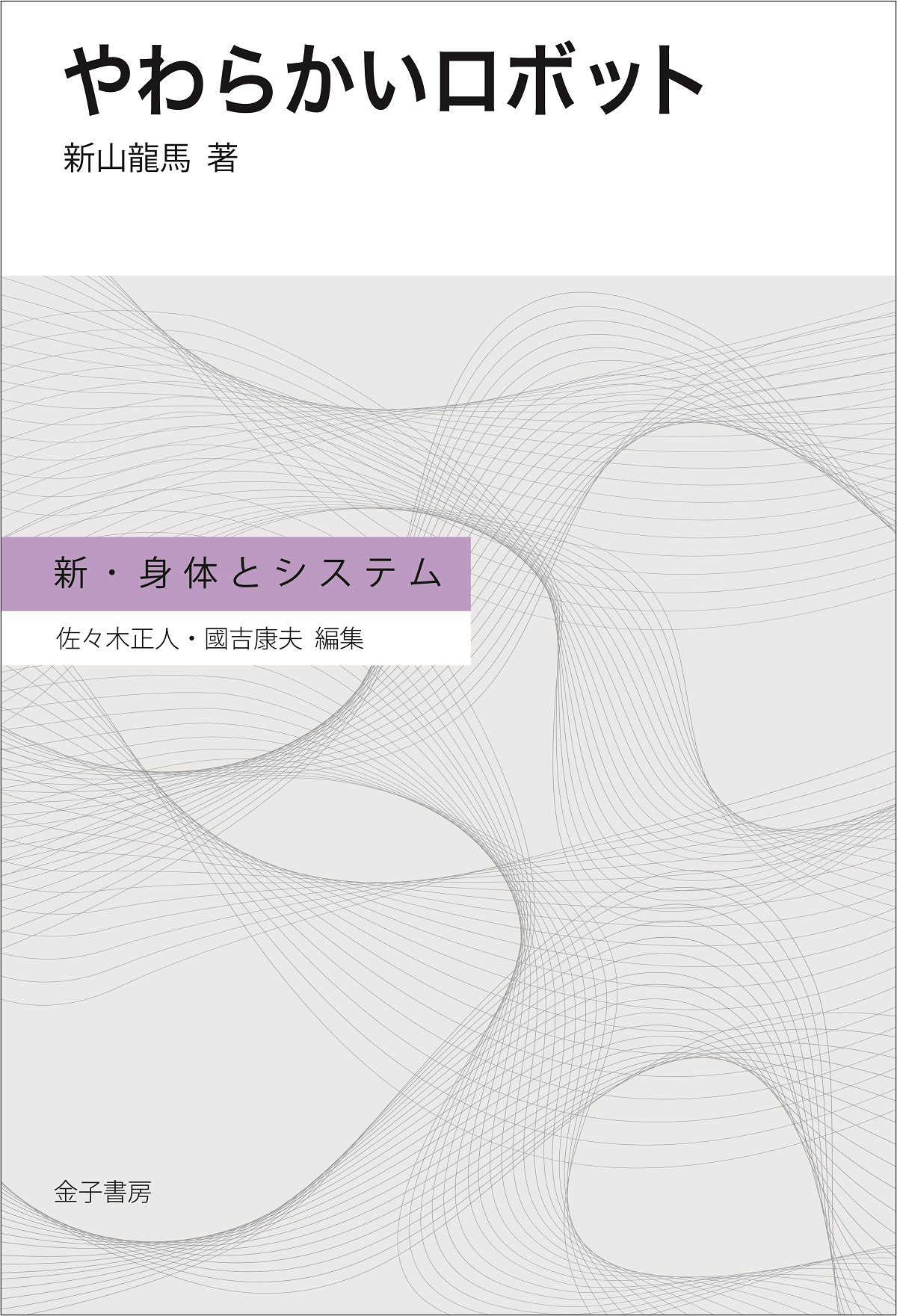
Title
A New Series of Bodies and Systems Yawarakai Robot (Soft Robots)
Size
192 pages, 127x188mm
Language
Japanese
Released
July 30, 2018
ISBN
9784760893935
Published by
KANEKOSHOBO
Book Info
See Book Availability at Library
Japanese Page
The new academic research field known as soft robotics became very enlivened from about 2010 onward. “Soft” means literally “flexible” or “pliable.” Lots of interesting robots are now appearing, overturning the image of the hard, metallic robot. But up to now there was no book either in English or Japanese that gave a full picture of these robots. This book, Soft Robots, is a concise summary of keywords and basic knowledge on soft robotics and its peripheral technology.
Why do robots need to be soft? To understand this, all you need to do is to think about why human limbs and faces are soft. If the balls of your fingers or palms were hard, you would have difficulty holding things. The muscles in the soles of your feet and the changes in shape of your feet absorb the shocks of walking. We are able to make minute changes in expression due to the softness of our faces. Softness is a modest yet indispensable trait. If we want robots to do the same kinds of things humans can do, then it is necessary to research into softness.
In fact, research to create soft robots has been conducted for a good many years. This book also introduces a number of research projects from the past, including attempts to make snake robots and artificial muscles, that today could be said to be research into soft robotics. Recently, it has become possible to create robots with complex shapes from materials other than metal using 3D printers. Moreover, for example, materials that can change their hardness and technology for simulating shape changes have also appeared, providing boosts for soft robot research.
One further feature is that the contents of this book should provide great fun for people who are interested in both living beings and machines. I wonder if you have ever thought about incorporating the mechanism of the human brain into AI, recently very topical. In the same way, there are many different kinds of robots, but I wonder if you have ever had the idea that more amazing robots could be created by incorporating the body mechanisms of humans and other animals into robots. This book also contains a section on bio-inspired robots created using these concepts as a part of soft robotics-related research. The close approach of robotics and biology is spawning exchanges among researchers who are full of intellectual curiosity.
While the roles played by robots in today’s society are still very limited, much is expected of new developments in robot research. It may be that robots we have never seen or heard of are about to be born right now somewhere in the world. We hope very much that you will pick up this book and take a peek into new trends in robotics research.
(Written by NIIYAMA Ryuma, Lecturer, Graduate School of Information Science and Technology / 2020)
Related Info
Science of Soft Robots – JSPS KAKENHI Grant-in-Aid for Scientific Research on Innovative Areas (2018-2022)
http://softrobot.jp/
Feature articles:
A robotics expert leaps into the future (TECHNOLOGY.ORG Oct 8, 2020)
https://www.technology.org/2020/10/08/a-robotics-expert-leaps-into-the-future/
ryuma niiyama: athlete robot (designboom Dec 2010)
https://www.designboom.com/technology/ryuma-niiyama-athlete-robot/
Conference:
IJCAI-PRICAI YOKOHAMA 2020 International Joint Conference on Artificial Intelligence – Pacific Rim International Conference on Artificial Intelligence (Yokohama, Japan Jan 7-15, 2021)
https://ijcai20.org/accepted-robot-exhibitions/
APMSR2019 International Conference on Active Polymer Materials and Soft Robotics (Xi’an, China Aug 25-28 2019)
https://www.apmsr2019.com/
The first IEEE-RAS International Conference on Soft Robotics (LIVORNO, ITALY April 24-28, 2018)
https://ewh.ieee.org/soc/ras/conf/fullysponsored/robosoft/2018/www.robosoft2018.org/committee.html
Award:
Best Demonstration Award: Low-pressure Soft Inflatable Joint Driven by Inner Tendon (IEEE RoboSoft 2019)
http://www.robosoft2019.org/awards.html



 Find a book
Find a book

